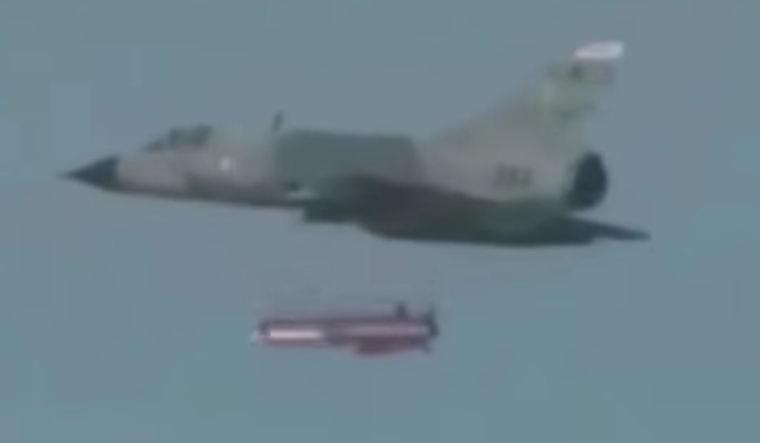Ra'ad-II cruise missile can hit Delhi from deep inside Pakistan: Report
Ra'ad-II reportedly features design changes, allowing more types of jets to carry it
Web Desk February 19, 2020 13:37 IST
Screengrab of Ra'ad-II missile being launched from a Mirage-III/V fighter
Pakistan on Tuesday announced it had conducted a successful test of an air-launched cruise missile called the Ra'ad-II. The Inter Services Public Relations, the PR wing of the Pakistan military, released a statement on the Ra'ad-II test, noting that the weapon had a range of 600km. The Ra'ad-II cruise missile is a modernised version of the Ra'ad-I missile, which Pakistan first test-fired in 2007 and was claimed to have a range of 350km.
The Ra'ad-II was first unveiled at a military parade in 2017.
ISPR also shared a video of the Ra'ad-II cruise missile being launched off a
French-built Mirage III/V fighter. The aircraft, which Pakistan has operated for over 50 years, was also used in testing the earlier Ra'ad-I missile. Interestingly, the Mirage-III/V jet was the aircraft Pakistan claimed to have used when it attempted to bomb an Indian Army facility on February 27 last year in retaliation for the Balakot air strike.
Defence News, a reputed defence website, on Tuesday, analysed the video footage of the Ra'ad-II test and speculated that the missile had been "entirely redesigned with a new intake and control surfaces".
The original Ra'ad-I missile had a 'twin tail' configuration, "but the Ra'ad-II appears to have adopted a more compact 'X' configuration layout",
Defence News reported. This would enable it to be carried on more aircraft, such as the JF-17 fighter, jointly developed by Pakistan and China. Pakistan has built more than 100 JF-17 jets and the type will be the
mainstay of the Pakistan Air Force.
Quwa, a Pakistani website covering Islamabad's military, claimed the design changes may have made the Ra'ad-II missile lighter, conceivably enabling it to be carried under the wings of the JF-17.
Defence News also speculated that the "range increase would allow the missile to launch well within Pakistan’s territory while being able to hit critical targets within India—New Delhi is roughly 430 kilometers from Lahore.."
The publication observed Pakistan's need for longer-range weapons has increased as India prepares to receive the Russian S-400 air defence system. Last week, the Donald Trump administration cleared the possible sale of a medium-range air defence missile system to India, which can shoot down targets such as aircraft and cruise missiles.
Defence News quoted Mansoor Ahmed, a Pakistan strategic analyst, as saying the Ra'ad-II was "Pakistan’s answer to India’s development of the Nirbhay cruise missile". Pakistan's ability to hit targets in India has been largely limited to its fleet of ballistic missiles, the use of which could be considered a massive escalation in the event of even a non-nuclear conflict.
Moreover, cruise missiles, which fly in the atmosphere like an jet airplane, are more accurate than ballistic missiles in hitting ground targets.
https://www.theweek.in/news/world/2...t-delhi-from-deep-inside-pakistan-report.html






